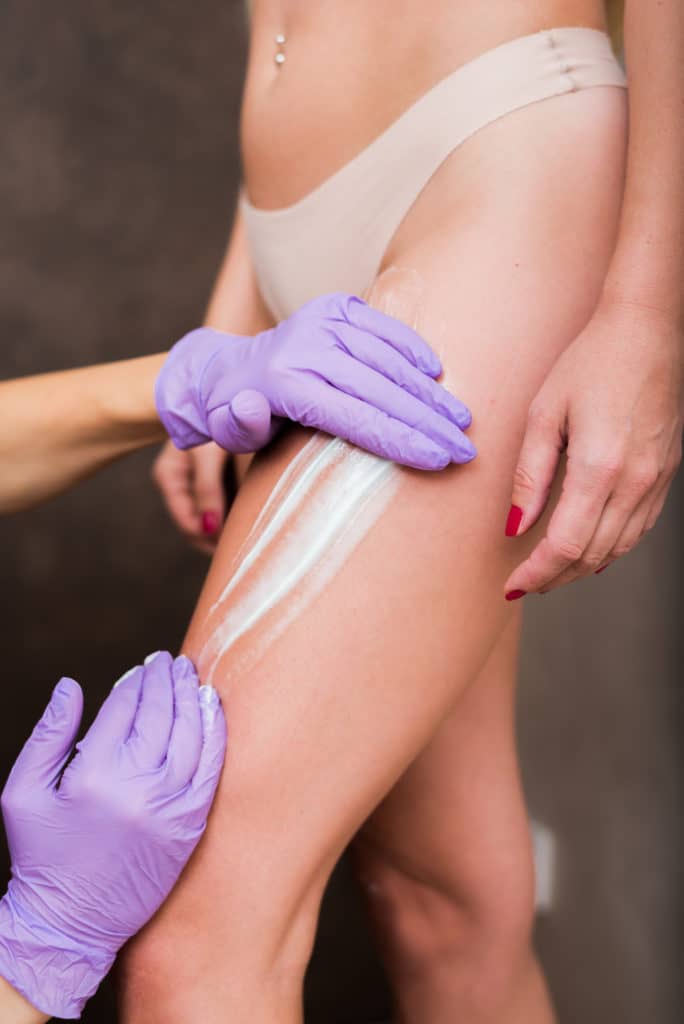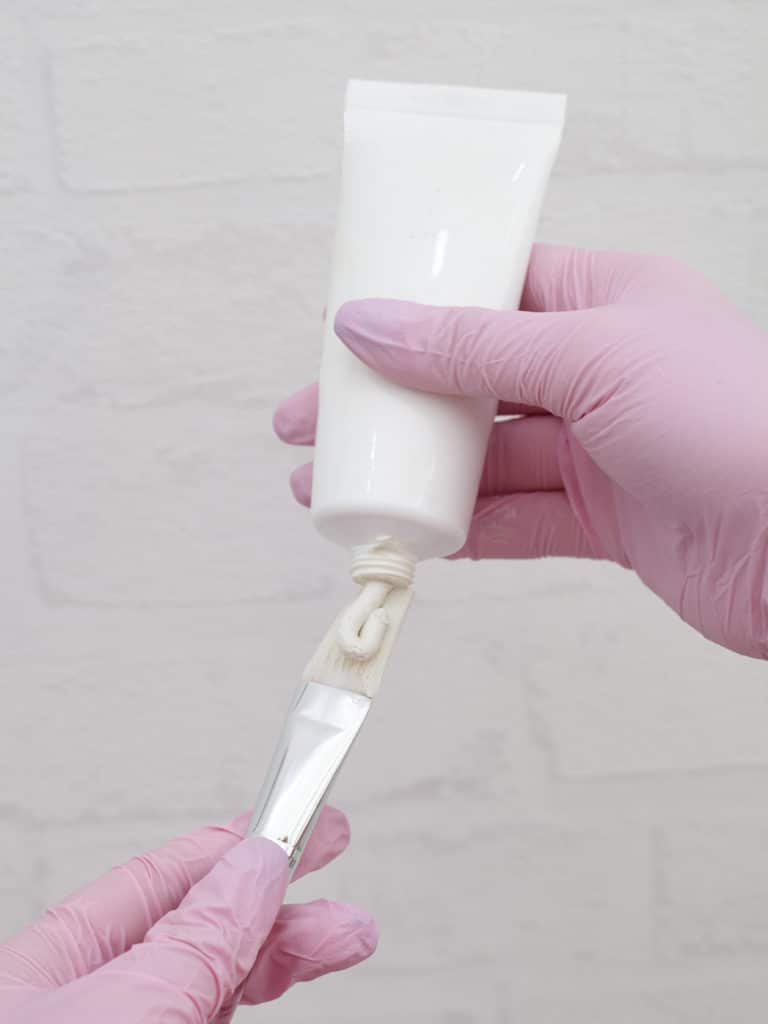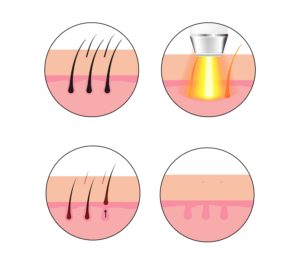Numbing Cream for Laser Hair Removal

Laser Hair Removal Numbing Cream is simply topical numbing cream that is used during a laser hair removal procedure. The key to an effective numbing cream for laser hair removal is finding one that works quickly. Some numbing cream products contain chemical “drivers” that help the active pharmaceutical ingredients (API’s) like lidocaine rapidly penetrate the skin to create the numbing effect.
Another thing to look for in numbing creams used for laser hair removal is the consistency of the product. It will lead to a better patient experience if the numbing cream used before a procedure is smooth, uniform and consistent. Some less desirable anesthetic creams leave a gritty, oily, chalky or flaky residue. Not only is this residue less comfortable for the patient, it will also make it more difficult for the medical providers to apply and remove the cream before a procedure.
Is Laser Hair Removal Painful?
Patients often describe the sensation of being treated with a hair removal laser like having multiple rubber bands snapping again their skin. Some patients decide that they handle the discomfort, while others would much prefer some sort of topical pain relief. In order to keep most of their patients happy, clinicians will typically choose is to apply a numbing cream to the treatment area 15-25 minutes before performing any laser hair removal procedure.
Topical Lidocaine for Laser Hair Removal

Lidocaine hydrochloride (previously known as lignocaine hydrochloride in the UK) is a common active ingredient in numbing creams use for laser hair removal procedures. Topical lidocaine is used in many medical and cosmetic procedures to numb areas that would otherwise feel pain.
Pain is caused by the stimulation of pain receptors at the ends of nerves. The stimulation causes sodium to enter the nerve ending, which causes an electrical signal to build up in the nerve. When this electrical signal is big enough, it passes along the nerve to the brain, where the signal is interpreted as pain. Topical lidocaine for laser hair removal works by temporarily blocking nerve conduction near their site of administration, thereby producing a temporary loss of sensation in a targeted area. Nerve impulse conduction is blocked by decreasing nerve cell membrane permeability to sodium ions, possibly by competing with calcium-binding sites that control sodium permeability. This change in permeability results in decreased depolarization and an increased excitability threshold that, ultimately, prevents the nerve action potential from forming
Safety and Efficacy of Numbing Creams

The best skin numbing for laser hair removal has a rapid onset, is safe and effective and is packaged in sanitary, single-use packets. The reason why it is important for the skin numbin cream to have a rapid onset, is because both patients and clinicians will not need to wait for 30-60 minutes while the product takes affect. It should only take 10-15 minutes for the numbing cream to start working. From a safety standpoint, the longer a numbing cream sits on the skin waiting for it to work, the higher the chances too much active ingredient (lidocaine, benzocaine and/or tetracaine) can get into the blood stream, risking the patient’s health.
When an anesthetic (or numbing) cream is applied to the skin, some portion of the active ingredient enters where the nerves are located. The best skin numbing products for laser hair removal procedures should include skin penetration enhancers, also known as “drivers,” in their formulations, to help the the active ingredient (lidocaine, benzocaine and/or tetracaine) quickly get into the patient’s skin in the highest concentrations possible. These drivers work by making the skin temporarily more permeable. This means that the skin becomes capable of accepting the active ingredients so they can reach the nerves and create the desired numbing effect.
Numbing Cream Risks
It is very important to respect topical lidocaine and other numbing creams used for laser hair removal procedures. These numbing creams are potent medications that require proper application and adherence to dosing guidelines. When used in overly large dosages, on large surface areas, or applied for long periods of time, especially under occlusive dressing, there is a risk of potentially serious adverse events (bad side effects). This applies to ALL topical lidocaine for laser hair removal products!
Adverse effects are usually caused by high plasma concentrations of topical anesthetics that typically result from excessive exposure caused by application to abraded or torn skin. Possible adverse effects include the following:
- Burning or stinging may occur local to the administration site.
- Oral viscous lidocaine may cause systemic toxicity, particularly with repeated use in infants or children.
- CNS: High plasma concentration initially produces CNS stimulation (including seizures), followed by CNS depression (including respiratory arrest). The CNS stimulatory effect may be absent in some patients, particularly when amides (eg, tetracaine) are administered. Solutions that contain epinephrine may add to the CNS stimulatory effect.
- Cardiovascular: High plasma levels typically depress the heart and may result in bradycardia, arrhythmias, hypotension, cardiovascular collapse, and cardiac arrest. Local anesthetics that contain epinephrine may cause hypertension, tachycardia, and angina.
When used as directed, topical lidocaine for laser hair removal products are well tolerated. Always ensure appropriate use in order to limit the risk of side effects.
Laser Hair Removal - Mechanism of Action
Laser hair removal is one of the most commonly performed cosmetic procedures in the U.S. It beams highly concentrated light into hair follicles. Pigment in the follicles absorb the light which then destroys the hair.
The primary principle behind laser hair removal is selective photothermolysis (SPTL). SPTL is the matching of a specific wavelength of light and pulse duration to obtain optimal effect on a targeted tissue with minimal effect on surrounding tissue. Lasers can cause localized damage by selectively heating dark target matter, melanin, in the area that causes hair growth, the follicle, while not heating the rest of the skin. Light is absorbed by dark objects, so laser energy can be absorbed by dark material in the skin, but with much more speed and intensity. This dark target matter, or chromophore, can be naturally occurring or artificially introduced.
Melanin is considered the primary chromophore for all laser hair removal devices currently on the market. Melanin occurs naturally in the skin, and gives skin and hair their color. There are two types of melanin in hair. Eumelanin gives hair brown or black color, while pheomelanin gives hair blonde or red color. Because of the selective absorption of photons of laser light, only black or brown hair can be removed. Laser hair removal works best with dark coarse hair. Light skin and dark hair are an ideal combination. Laser hair removal procedures performed on this combination are most effective and producing the best results. New laser hair removal devices are now able to target black hair in patients with dark skin with some success.
Benefits of Laser Hair Removal
Lasers are useful for removing unwanted hair from the face and body, including the legs, arms, underarms, bikini line, and other more sensitive int imate areas.
Benefits of laser hair removal include:
- Precision. Lasers can selectively target dark, coarse hairs while leaving the surrounding skin undamaged.
- Predictability. Most patients have permanent hair loss after an average of three to seven sessions.
- Speed. Each pulse of the laser takes a fraction of a second. These laser pulses treat many hairs at the same time. The laser can treat an area approximately the size of a quarter every second. Small areas such as the upper lip can be treated in less than a minute. Large areas, such as the back or legs, may take up to an hour.
Laser Hair Removal Vs. Electolysis

Electrolysis is another hair removal method that has been used for over 135 years. Unlike laser epilation, electrolysis can be used to remove 100% of the hair from an area. It is effective on hair of all colors when proper technique is used. More hair may grow in certain areas that are prone to hormone-induced growth (e.g. a woman’s chin and neck) based on individual hormone levels or changes in hormonal status. Another determining factor in hair regrowth is genetic pre-disposition.
Preparing for a Laser Hair Removal Procedure

Laser hair removal is more than just “zapping” unwanted hair. It is a medical procedure that requires training to perform and carries potential risks. Before patients have their laser hair removal procedure, they should thoroughly check the credentials of the doctor or technician performing the procedure.
Additionally, anyone planning on undergoing laser hair removal, should limit plucking, waxing, and electrolysis for six weeks before treatment. This is because the laser targets the hairs’ roots, which are temporarily removed by waxing or plucking.
Patients should also avoid sun exposure for six weeks before and after treatment. Sun exposure makes laser hair removal less effective and makes complications after treatment more likely.
Laser Hair Removal Results
Results of laser hair removal procedures vary greatly from person to person, and might depend on what area of the body or face is treated. Treatment outcomes can also depend on the skill of the laser technician as well as the quality of the equipment used in the procedure. Multiple treatments can prolong the duration of hair loss — up to years in some cases — but hair regrowth is still possible. For best results, many patients may need four to six treatments spaced around six weeks apart. Additional periodic maintenance treatments — perhaps once every six to 12 months — may be beneficial as well.
Side Effects and Risks
Some normal side effects may occur after laser hair removal treatments. The most common side effects include itching, pink skin, redness, and swelling around the treatment area or swelling of the follicles. These side effects rarely last more than two or three days. The two most common serious side effects are acne and skin discoloration.
Unwanted side effects such as hypo- or hyper-pigmentation or, in extreme cases, burning of the skin call for an adjustment in laser selection or settings. Risks include the chance of burning the skin or discoloration of the skin, hypo-pigmentation (white spots), flare of acne, swelling around the hair follicle (considered a normal reaction), scab formation, purpura, and infection. These risks can be reduced by treatment with an appropriate laser type used at appropriate settings for the individual’s skin type and treatment area.
Some patients may show side effects from an allergy to either the hair removal gel used with certain laser types or to a numbing cream, or to simply shaving the area too soon in relation to the treatment.



